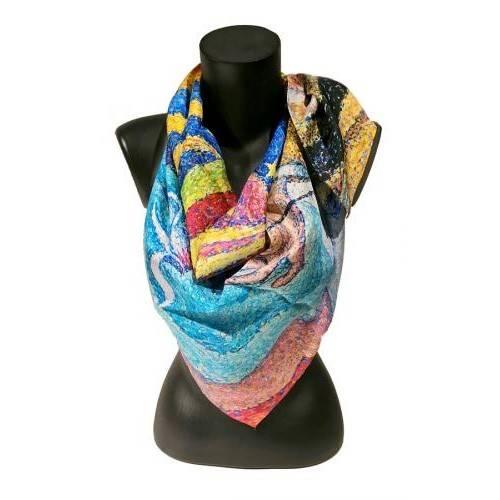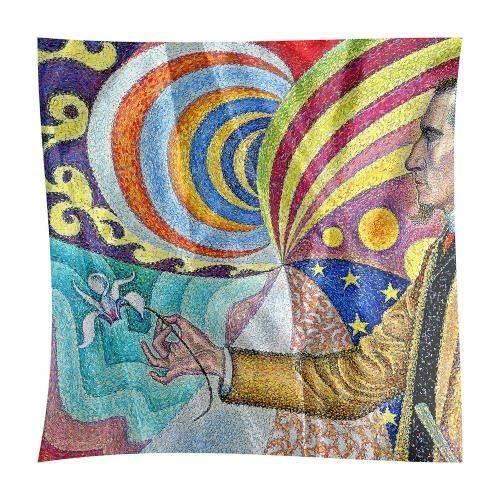Signac - Portrait of Félix Fénéon
Availability: 0 remaining
The “Made in Lyon and its surroundings” label promotes products manufactured within a 20 km radius, reflecting traditional Lyonnais know-how.
Technical data
| Size | 90 x 90cm |
| Color | Original |
| Composition | 100% Silk |
| Weaving | Twill (opaque, thick) |
| Made in | Lyon, France |
| Gender | Women |
Writer, journalist, anarchist, art critic, Félix Fénéon (1861-1944) was also an art collector and editor of magazines, including La Revue Blanche. He supported symbolist poets and painters he called neo-impressionists, such as Paul Signac and Pierre Bonnard. Signac painted this canvas at the age of 27, in 1890.
A defender of Matisse, Modigliani and the Italian Futurists when it was necessary to be one, and the initiator in 1920 of a now famous investigation into "distant arts" ("Will they be admitted to the Louvre?"), well before the creation of the Quai Branly and the Pavillon des Sessions, Fénéon was also the biting promoter, without being the theoretician, of neo-impressionism, whose name he coined in 1886. With Seurat and Signac, the critic established close friendships based on an intimate understanding of their work. "I always regard Fénéon's booklet as the exposition of my ideas on painting," wrote Seurat to Signac in 1888. It was he who, moreover, established the terminology specific to pointillism by speaking of "optical mixture", "simultaneous contrast", etc.
He defended authors such as Jules Laforgue, Alfred Jarry, Stéphane Mallarmé, Apollinaire, Rimbaud. In painting, he contributed to making Georges Seurat known, then Camille Pissarro as well as Pierre Bonnard, Paul Signac, Kees van Dongen, Henri Matisse, Maurice Denis, Émile Compard.
Full title of the work: "Opus 217, On the enamel of a rhythmic background of measures and angles, tones and tints, portrait of Mr. Félix Fénéon in 1890"

Opus 217, On the enamel of a rhythmic background of measures and angles, tones and tints, portrait of Mr. Félix Fénéon in 1890, 1890
Gift of Mrs. and Mr. David Rockefeller to MoMA, New York


































